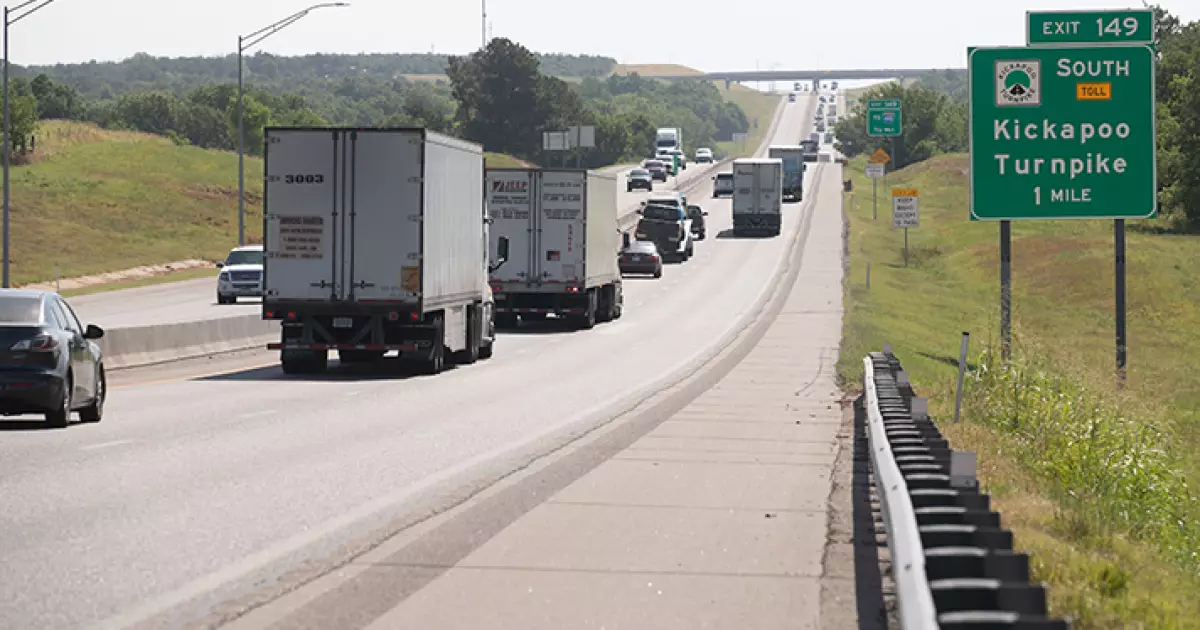The Oklahoma Turnpike Authority (OTA) is poised for a significant return to the municipal bond market later this month, planning a hefty $1.3 billion undertaking. This financial maneuver is meant to fuel the controversial ACCESS Oklahoma program, designed to expand and enhance the state’s toll road infrastructure. Initially introduced by Governor Kevin Stitt in February 2022, the estimated costs for this expansive initiative have burgeoned from $5 billion to an astonishing $8.2 billion. This escalation in costs reflects broader economic pressures and evolving project specifications, raising important questions about fiscal responsibility and the sustainability of such ambitious infrastructure projects.
The OTA plans to issue approximately $1.087 billion in tax-exempt second senior revenue bonds along with $223.3 million in refunding bonds. This ambitious issuance, set for late January, is contingent upon prevailing market conditions and will be overseen by Goldman Sachs. Investor engagement meetings are scheduled for mid-January in major cities such as Chicago, Boston, and New York. Such meetings are a critical aspect of the bond-selling process, as they provide insight into investor sentiment and readiness to support the project. The OTA’s movement to secure financing illustrates the pressing need for continued funding amidst rising costs associated with the turnpike expansions.
The implementation of the ACCESS program has not been without its critics. Last month, OTA’s board approved a toll increase as part of the funding strategy, triggering a response from state lawmakers demanding greater legislative oversight regarding toll hikes. Such reactions speak to a growing need for transparency and accountability in public financial decisions, especially in projects that have a direct impact on residents. Concerns have also been raised by the group Oklahomans for Responsible Transportation, which is advocating for a third-party feasibility study and has called for the suspension of forthcoming bond issuances pending the completion of a state audit ordered by the Attorney General. This highlights the tension between infrastructure growth and public oversight, emphasizing the importance of engaging stakeholders throughout the financing process.
Legal entanglements have also delayed the OTA’s previous bond issuances, most notably stemming from objections by property owners affected by the planned tollway expansions. However, after a favorable ruling from the Oklahoma Supreme Court, the OTA has commenced its financial strategies with renewed momentum. The recent ratings by Moody’s, S&P Global, and Fitch Ratings, all assigning stable outlooks to the initial $500 million bond issuance, reflect confidence in the project despite the challenges faced. These ratings are crucial for attracting potential investors and ensuring favorable interest rates when the bonds are sold.
As the OTA prepares to navigate a complex financial landscape with its forthcoming bond issuance, several overarching questions demand attention. Will the funding adequately reflect the growing costs associated with the ACCESS Oklahoma program? And how will public sentiment and legislative scrutiny shape the future of transportation infrastructure in Oklahoma? The answers to these questions will not only impact the current state of the Oklahoma Turnpike but also set precedents for how similar projects are funded and managed in the future. Long-term fiscal responsibility and transparency will be essential as Oklahomans grapple with the implications of this expanded toll road initiative.

